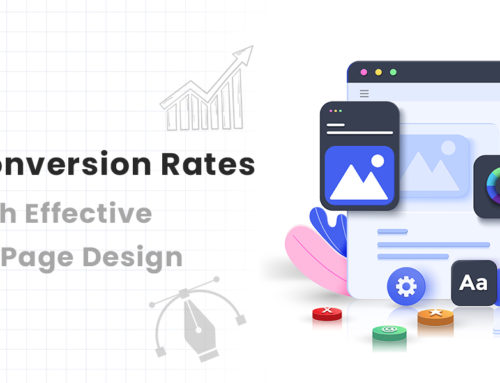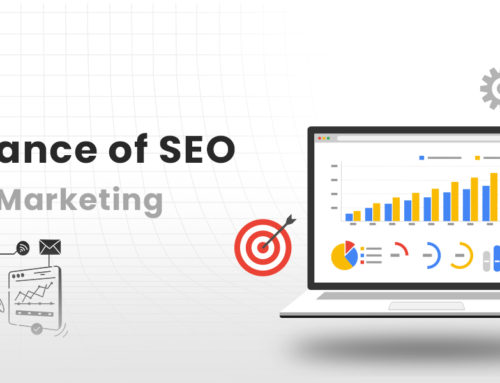Social media platforms are online digital spaces that enable users to create profiles, share content, and interact with others. They provide a means for people to connect, communicate, and engage in various forms of social interaction, fostering communities, and facilitating the exchange of information and ideas.
Social media has immense significance in modern society, transforming how we connect, communicate, and consume information. It allows instant global communication, promotes social activism, empowers individuals to share their voices, and influences cultural and political discourse. Social media has become an integral part of our daily lives, shaping our interactions and shaping the way we perceive and engage with the world.
Social Media has revolutionized the way we connect, communicate, and share information. From the early days of Friendster and MySpace to the current dominance of Facebook, Twitter, Instagram, and Snapchat, the evolution of social media platforms has been nothing short of extraordinary. Let’s take a look at the journey of social media platforms through their history, growth, key milestones and user statistics.
Table of Contents
1. Early Social Media Platforms
1.1 Introduction to early forms of Social Media:
Early forms of social media marked the beginning of online social interaction. They provided users with platforms to connect and communicate with others, laying the foundation for the social media revolution.
1.2 AOL Instant Messenger (AIM):
AOL emerged in the late 1990s as one of the earliest popular instant messaging services. It allowed users to chat, share files, and connect with friends and acquaintances in real time.
1.3 Friendster:
Friendster was launched in 2002, it introduced the concept of social networking. It enabled users to create profiles, connect with friends, and discover new people based on shared interests. It was the first platform to gain significant traction and laid the groundwork for subsequent social networking platforms.
1.4 MySpace:
Myspace was launched back in 2003 and quickly surpassed Friendster in popularity. It allowed users to customize their profiles, share music and videos, and connect with a wider network. MySpace became a cultural phenomenon, attracting millions of users and giving rise to the concept of personalized online profiles.
2. Emergence of Mainstream Social Media Platforms
Social media platforms have a rich history of evolution and growth. It all started with Friendster and MySpace in the early 2000s, paving the way for online social networking. The growth of social media has been marked by significant milestones that have shaped the digital landscape. One pivotal milestone was the launch of Facebook in 2004, which introduced features like news feeds and expanded the concept of social networking. Twitter’s creation in 2006 revolutionized real-time communication with its 140-character limit. The introduction of Instagram in 2010 brought focus to photo and video sharing, while Snapchat’s arrival in 2011 popularized ephemeral messaging and Stories. These milestones not only influenced user behaviour but also sparked a wave of innovation, transforming social media into an integral part of our lives.
2.1 Facebook:
Facebook, launched in 2004, played a pivotal role in popularizing social networking. With its user-friendly interface and features like news feeds, it quickly gained millions of users, becoming the largest social media platform globally. Facebook transformed how we connect with friends, share updates, and engage with content.
2.2 Twitter:
Twitter was launched in 2006, and introduced the concept of microblogging, allowing users to share thoughts, news, and updates in short, 280-character posts. Its real-time nature and hashtag system made it a hub for breaking news, trends, and public discourse.
2.3 YouTube:
Youtube was established in 2005 and brought video content to the forefront. It empowered individuals to share and discover a wide range of videos, from entertainment to educational content. YouTube became a platform for creators and sparked the rise of influencer culture.
2.4 LinkedIn:
LinkedIn, launched in 2003, revolutionized professional networking. It provided a platform for individuals to showcase their skills, connect with industry peers, and discover job opportunities. LinkedIn became an essential tool for professional development and recruitment.
3. Mobile & Visual-Focused Social Media Platforms
Mobile and visual-focused platforms have reshaped the social media landscape, prioritizing engaging content and mobile accessibility.
3.1 Instagram:
Instagram launched in 2010, popularized visual sharing, filters, and the square photo format, becoming a hub for photo and video content.
3.2 Snapchat:
Snapchat, introduced in 2011, popularized ephemeral content and disappearing messages, appealing to a younger audience and sparking a trend of temporary, authentic sharing.
3.3 Vine:
Vine was established in 2012, and pioneered short-form video content with its looping six-second videos, allowing users to showcase creativity in a concise format.
3.4 TikTok:
TikTok, launched in 2016, propelled user-generated entertainment to new heights with its short, viral video format, empowering individuals to create and share engaging content.
4. Expansion of Social Media Functionality
The expansion of social media functionality has been driven by the introduction of innovative platforms that offer new ways to connect and engage with content. Over the years, social media platforms experienced remarkable growth. The growth of social media platforms can be attributed to their constant evolution and adaptation to user needs. They have expanded their features to include live video streaming, augmented reality filters, and e-commerce integrations. Infographics, interactive polls, and engaging content formats have become essential tools for users and brands to captivate audiences.
4.1 Pinterest & Visual Discovery:
Pinterest launched in 2010, revolutionized visual discovery by allowing users to create and curate visual boards of ideas and inspiration. It provided a platform for users to explore and share visual content, from DIY projects to fashion inspiration.
4.2 Reddit & Emergence of Community-Driven Content:
Reddit was established in 2005, introducing the concept of community-driven content. It became a hub for discussions, news, and sharing of links and content, with users forming specialized communities (subreddits) around various interests and topics.
4.3 WhatsApp & Growth of Messaging Apps:
Whatsapp, launched in 2009, played a significant role in the growth of messaging apps. It provided a simple and convenient platform for instant messaging, voice calls, and file sharing, connecting people across the globe.
4.4 Twitch & Rise of Live Streaming:
Twitch was established in 2011, popularized live streaming of video games and expanded to include a wide range of live content, including music, art, and talk shows. It created a space for content creators to engage with their audiences in real time and fostered a vibrant community of viewers.
5. Integration & Convergence
Integration and convergence in the context of social media refer to the merging of platforms, features, and functionalities to create a more seamless and interconnected digital experience.
5.1 Facebook’s Acquisitions & Platform Dominance:
Facebook’s acquisitions of Instagram and WhatsApp exemplify integration and convergence. By acquiring these platforms, Facebook expanded its reach and integrated their features into its ecosystem, creating a more comprehensive social media experience. This consolidation reinforced Facebook’s platform dominance and extended its influence.
5.2 Integration of Social Media Features into Other Platforms:
The integration of social media features into other platforms is another example. For instance, Snapchat’s introduction of Stories, a feature allowing users to share temporary content, was later adopted by platforms like Instagram, Facebook, and WhatsApp. This convergence of features across platforms offers users a consistent experience and encourages cross-platform engagement.
5.3 Emergence of social commerce and the blending of e-commerce with social media:
The emergence of social commerce represents the blending of e-commerce and social media. Platforms like Instagram and Facebook now integrate shopping functionalities, allowing businesses to sell products directly within the social media environment. This convergence enables seamless browsing, purchasing, and sharing of products, blurring the lines between social interaction and online shopping.
Overall, integration and convergence in social media lead to a more interconnected digital landscape, enabling users to engage with various platforms and features seamlessly, while also creating new opportunities for businesses and enhancing the overall user experience.
6. Impact on Society and Culture
The impact of social media on society and culture is far-reaching, shaping various aspects of our lives.
6.1 Influence on communication and social interactions:
Social media has revolutionized communication and social interactions. It has made it easier to connect with friends, family, and communities across the globe. However, it has also altered the nature of relationships, with some arguing that it can lead to a superficial sense of connection and decreased face-to-face interactions.
6.2 Role in political activism and social movements:
Social media has played a significant role in political activism and social movements. It provides a platform for individuals to express their opinions, raise awareness, and organize collective action. It has facilitated the spread of information, mobilization of support, and amplification of marginalized voices.
6.3 Concerns regarding privacy and data security:
Concerns surrounding privacy and data security have emerged as social media platforms collect vast amounts of personal information. There are debates about the ethical use of data, potential surveillance, and the risk of data breaches. Users’ privacy and control over their data have become central issues.
6.4 Positive and negative effects on mental health:
The impact of social media on mental health is a subject of ongoing research and debate. While it can provide a sense of belonging and support, excessive use, cyberbullying, and social comparison can negatively impact mental well-being. It is crucial to balance the positive aspects of social media with self-care and healthy boundaries.
7. Current and Future Trends:
Current and future trends in social media reflect the evolving needs and preferences of users, as well as emerging technologies and societal concerns.
7.1 Introduction of new platforms :
New platforms like Clubhouse and emerging TikTok alternatives are gaining attention, offering unique features and experiences. These platforms tap into the demand for audio-based content and short-form videos, respectively, providing users with fresh avenues for self-expression and engagement.
7.2 Continued growth of video content and live streaming:
The growth of video content and live streaming is set to continue. Platforms like YouTube, Twitch, and TikTok have popularized video-centric experiences, and this trend is expected to expand further. Live streaming allows real-time interaction and immersive content experiences, appealing to audiences seeking authentic and engaging digital content.
7.3 Focus on user-generated content and influencer marketing:
User-generated content and influencer marketing remain key trends. Social media platforms continue to empower users as content creators, fostering a sense of community and authenticity. Influencer marketing, where brands collaborate with popular social media figures, will continue to shape advertising and consumer behaviour.
7.4 Emphasis on privacy and data protection:
Privacy and data protection are gaining significant attention due to concerns over data breaches and misuse. Users are becoming more conscious of their online privacy and are demanding greater transparency and control over their data. Social media platforms are responding by implementing stricter data protection measures and providing users with more privacy options.
Social media platforms have evolved significantly since their inception. From early platforms like Friendster and MySpace to the mainstream dominance of Facebook, Twitter, and Instagram, these platforms have revolutionized how we connect and share information. The emergence of mobile-focused platforms like Snapchat and TikTok has further shaped the social media landscape, catering to changing user preferences and behaviours.
Social media platforms continue to shape the way we interact and consume information. As they evolve, their influence on society and culture only deepens. With user statistics reaching new heights, it’s clear that social media has become an integral part of our daily lives, connecting people across the globe and transforming the way we share and engage with content.
Social media’s impact on society is undeniable. It has transformed communication, empowered social movements, and influenced consumer behaviour. It has connected people globally but also raised concerns about privacy, mental health, and the spread of misinformation. Social media has become a powerful tool for individuals, businesses, and governments, shaping culture and amplifying voices. Social media platforms have witnessed staggering user statistics, reflecting their immense popularity and influence. Facebook stands as the largest platform, with over 2.8 billion monthly active users globally.
Twitter boasts around 330 million active users, while Instagram has surpassed 1 billion, making it a favourite among visual content enthusiasts. Snapchat has an estimated 500 million users, predominantly among younger demographics. LinkedIn, a platform for professionals, has over 740 million members. Pinterest, known for visual discovery, attracts over 400 million users. TikTok, a rising star, has amassed over 1 billion monthly active users. These user statistics highlight the widespread adoption and impact of social media on a global scale.
Looking ahead, social media will continue to evolve and face new challenges. Future developments may include advancements in augmented reality, virtual reality, and artificial intelligence, which could reshape user experiences. Challenges such as addressing misinformation, ensuring data privacy, and maintaining a healthy online environment will require ongoing efforts from platforms, policymakers, and users themselves. Striking a balance between innovation, user well-being, and ethical practices will be crucial for the future of social media.





Leave A Comment